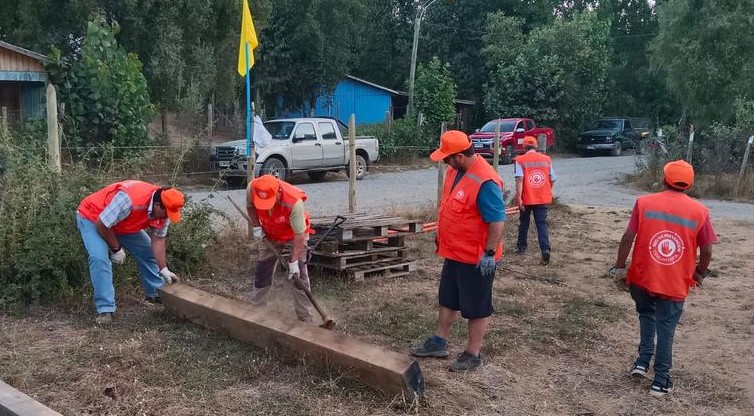Conaf Analysis Reveals 47% of 400 Wildfires Were Intentional
- The institution is working to determine the origin of the fires, a task that also helps identify optimal preventive measures. This year, the goal is to investigate a total of 580 incidents.
As the summer season comes to an end, authorities' assessment of the 2023–2024 wildfire season in Biobío remains positive. This was announced on Wednesday, February 13, from the Quebrada Honda area in the commune of Tomé, where the so-called Quebrada Honda 2 fire occurred, affecting 0.6 hectares of plantation, primarily eucalyptus and low vegetation.
This fire is among those under investigation, a process led by the Analysis and Diagnosis Unit of the National Forestry Corporation (Conaf). According to its regional director, Rodrigo Jara, the purpose is to determine the origin of the incidents and guide prevention campaigns accordingly.
The goal for this year is to identify the cause of at least 580 fires. So far, the agency has already examined 400 of them, detecting intentionality in 47% of cases.
KEY FIGURES
The corporation's director explained that the unit aims to investigate 580 fires. To date, around 400 have been analyzed, revealing a 47% intentionality rate. Last year, 426 fires were investigated, with a 56.1% intentionality rate.
Regarding this effort, the regional presidential delegate, Daniela Dresdner, stated, "The target set by Conaf is one of the highest in all regions of the country. This work has also yielded good results this season, which is positive news for the Biobío Region. We're seeing a 97% reduction compared to last year."
Similarly, it was revealed that there has been a 27% decrease in occurrences compared to 2022–2023. "As of today, there have been 1,200 fires affecting 5,000 hectares—a 98% reduction in damage. The numbers are good, but the season isn’t over yet; we still have summer and a very dry autumn ahead. Our teams will continue working until the end of May," said Director Rodrigo Jara. The efforts initiated after the 2023 forest catastrophe—which include preparing communities, schools, and neighborhood associations for community patrols—have been key in reducing these figures, according to Delegate Dresdner, though coordination among state actors has also played a crucial role.
"Coordination with Corma (Chilean Wood Corporation) is absolutely essential for these results, as is collaboration with the Armed Forces, Carabineros de Chile, and municipalities to conduct patrols aligned with the plans established by Conaf," she stated. Despite the positive figures, authorities reiterated the call to continue prevention efforts and shared responsibility to avoid new emergencies.
ANALYSIS UNIT
Camila Álvarez, a member of the Analysis and Diagnosis Unit of Concepción Province, explained, "The process begins with desk work, reviewing various meteorological variables, access to fire sites, and topography. Then, fieldwork is conducted to examine physical evidence left by the fire. Based on this, we determine the fire's progression and narrow it down to a specific area for a more detailed investigation to identify the origin."
The expert also noted that alongside physical evidence, "we conduct interviews with first responders, neighbors, and other stakeholders related to the incidents, as well as assess activity indicators in the area—such as plantations, whether it's a recurring sector, and different activities that may occur in properties near the affected area."
Source: Diario El Sur

















